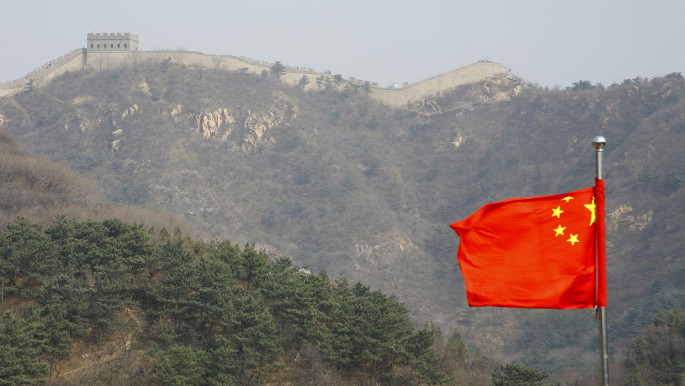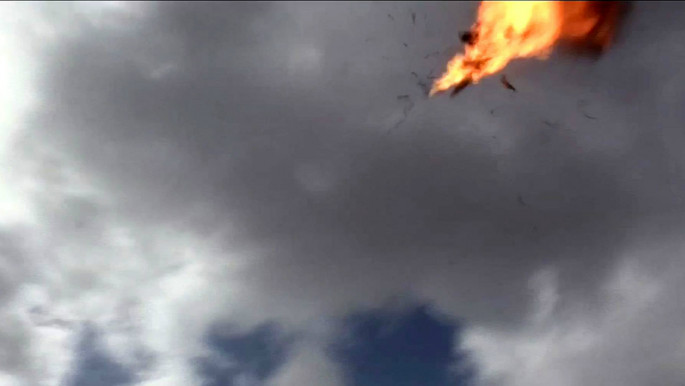The significance of drones in the Libyan conflict
Unlike the war in Syria, both sides in this conflict have successfully used airpower to attack each other's bases and forces.
These range from aged warplanes from Libya's Gaddafi-era air force to modern drones supplied by the regional backers of the feuding Libyan groups.
Early in the siege, Chinese-made Wing Loong II drones bombed Tripoli, terrorising its inhabitants. These were likely drones belonging to the United Arab Emirates, which is a major backer of LNA leader General Khalifa Haftar.
Not long thereafter Turkey delivered the GNA a fleet of Turkish-made Bayraktar TB2 drones. Use of these drones helped the GNA offset the LNA's hitherto advantage in that area.
Turkish and Emirati operators are likely piloting both drone fleets on behalf of their respective proxies.
"Although some Libyans in the LNA have reportedly been trained to operate Wing Loong drones, the situation at hand is that foreign actors from both sides are wielding drones to attack each other's infrastructure and air capabilities, and also using their drones to defeat their Libyan client's enemy and prevent their client from being defeated," Tarek Megerisi, a policy fellow at the European Council on Foreign Relations' North Africa and Middle East programme told The New Arab.
 |
|
| Read also: How China is heavily contributing to Middle East drone and missile proliferation |
"The drone conflict taking place is perhaps the best representation of the internationalisation this war has undergone, as it is proxies fighting each other on Libyan soil," he said.
Haftar's forces clearly fear the GNA's drone fleet given the fact they have seized every opportunity to try and neutralise it.
In late June, the LNA announced they destroyed a Turkish-made drone in an airstrike against Tripoli's Mitiga International Airport.
This was clearly part of an effort to both neutralise the GNA's new drone capability as well as to avenge itself over the loss of Gharyan, a city south of Tripoli that the LNA had used as a logistics hub for its siege on the capital, to the GNA.
 |
The significance of airpower has grown throughout the conflict and is currently central to the fortunes of both sides |  |
The LNA also claimed, on August 5, that it destroyed more GNA drones in an attack on Al-Nimwah airport, which is situated 70 km south of Misrata.
Either side will find it quite difficult to prevail in this conflict without first attaining air superiority. This is one reason why both groups have gone to great lengths to preserve their airpower.
"The significance of airpower has grown throughout the conflict and is currently central to the fortunes of both sides," Megerisi said.
The LNA "relies on airpower to maintain a presence and threat-level far beyond what its ground forces are capable of, for example, the ability to strike Misrata and Murzuq."
The group also relies on airpower "to make up for their lesser troop numbers and to try to weaken enemy defences before offensives take place and to take out the ammunition and vehicle depots of their opponents."
Megerisi even estimates that were it not for the LNA's "airpower (and relative superiority) they would likely have suffered an all-out defeat a couple of months ago."
"The importance of airpower to the LNA can be seen with the large number of troops stationed at Jufra airbase, which is what they use for the majority of their attacks," he said.
"Estimates suggests that there are more troops there than on the front in Tripoli."
The GNA, on the other hand, "have largely developed their air capacity in response to the LNA's, and it has allowed them to temper the offensive capabilities of the LNA.
"More recently they have made use of their offensive capabilities to both hit Haftar's supply lines and synchronise airstrikes with ground advances, which was used to devastating effect when Gharyan was reclaimed," he said.
The lethality of the GNA's drone fleet was demonstrated when it routed the LNA from Gharyan, the biggest strategic setback Haftar's forces have suffered in the war to date.
 |
|
| Read also: Middle East drone wars heat up in Yemen |
"In short, they [drones] were a vital part of the strategy to reclaim the city whereby airstrikes softened up enemy defences and created the cover for rapid advances by GNA forces," Megerisi said.
"This operation probably represents the most efficient and effective use of drones in the conflict so far."
Megerisi noted that in this conflict drones "are the primary mode of air engagement, and as such have been central to the conflict from the very beginning."
"Initially they were used primarily for reconnaissance, but as Haftar's advance stalled they were then used by the LNA for offensive purposes," he said.
"This drove the GNA to acquire Turkish drones which hit back at LNA airbases and were then central to the offensive on Gharyan."
In addition to this, using drones are practical for both sides since they are effective and difficult to defend against.
"The air forces of both the GNA and the LNA are relatively old and ineffective," Megerisi said.
"Drones are considerably cheaper to run than the advanced jets (such as F-16's) of the UAE and Egypt which have also begun to be deployed."
The GNA allege that UAE F-16s bombed the migrant detention centre in Tripoli on July 3, an incident that killed 53 people.
Drone strikes are also increasingly killing civilians. Early this month, a drone strike blamed on the LNA struck the town of Murzuq and killed at least 45 people, including several children.
"The LNA is aware that without air superiority it will be impossible for them to hold their positions let alone win this conflict," Megerisi said.
He explained that the LNA is currently in a "precarious position" since the GNA's drones "cannot only severely inhibit their ability to supply and maintain a linkage between the east and the Tripoli front, but also target and destroy expensive foreign equipment in Jufra airbase."
"If the GNA were to hold air superiority then the LNA would find itself unable to prosecute its war, and even its defensive position in Jufra (protecting the oil crescent) would suddenly seem vulnerable," he said.
Paul Iddon is a freelance journalist based in Erbil, Iraqi Kurdistan, who writes about Middle East affairs.
Follow him on Twitter: @pauliddon





 Follow the Middle East's top stories in English at The New Arab on Google News
Follow the Middle East's top stories in English at The New Arab on Google News


